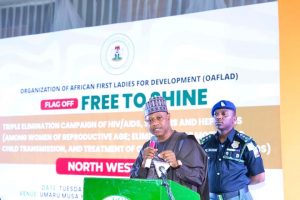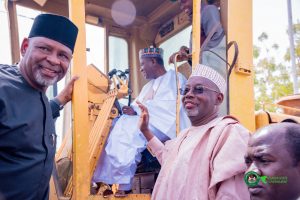CEO Rob DeMartini takes USA Cycling in bold, new directions


When Rob DeMartini took over at USA Cycling about a year ago, the longtime businessman immediately noticed parallels between the sport’s governing body and New Balance, the footwear and apparel manufacturer he transformed over more than a decade in charge.
New Balance had grown stale. It was the brand your parents wore. It had fallen out of touch with trends in modern footwear, and as a result, it became a second thought not only to serious runners but also to recreational athletes.
“I had a lot of support from the ownership family to make the brand young and great and vibrant as it had been in the past,” DeMartini said, “and it took a number of years. But the parallels are very apparent here at USA Cycling.”
The organization’s membership has held steady or slightly declined for years. Despite the work of his predecessor, Derek Bouchard-Hall, there remained a yawning rift between elite athletes and recreational riders. And perhaps most significantly, casual riders had begun to embrace events — such as the mass-participation gran fondo events, gravel rides and the myriad ultra-long distance races that have sprung up — that had nothing to do with USA Cycling’s oversight or support.
Much like New Balance, the organization had become an afterthought.
So with that in mind, DeMartini decided to lead USA Cycling in a bold, new direction. It still provides significant support for elite riders, perhaps more than ever, but DeMartini envisions an organization that fosters a true cycling community, where a rider headed to the 2020 Tokyo Olympics is just as valued as the family riding bikes to the local ice cream shop.
“We’re working very hard on it,” DeMartini told The Associated Press in a wide-ranging interview. “I have a staff of 70 very committed people. They’re in this because they believe in the power of cycling. They believe in the power of sport. They’re not in this to get rich and driven by those motivations. They believe in what cycling can do.”
After years of being dragged through the mud, largely due to the fallout over Lance Armstrong and the sport’s doping past, cycling is experiencing a modern boom not only in the United States but also abroad.
Thousands have embraced indoor spinning classes such as Flywheel and SoulCycle, or purchased a Peloton bike, and many in turn hop on bikes outside. Gravel events such as Dirty Kanzaa in rural Kansas and group rides such such as the Dempsey Challenge — put on by actor and cycling enthusiast Patrick Dempsey — fill up almost immediately. Sales figures for bikes, equipment and apparel suggest more people are embracing the sport than ever before, and municipalities are building bike lanes at an incredible rate to both embrace the cycling movement and ease their own traffic congestion.
Now, the task for DeMartini is to figure out how USA Cycling best fits within that vast milieu.
“This is different than New Balance,” acknowledged DeMartini, who took that company from sales of about $1.5 billion to roughly $4.5 billion. “Our responsibility to the sport is much more direct. We’re not a profit-making organization.”
But the organization is in the business of growing the sport. To do that, USA Cycling has done everything from revamping its website and appearance to offering new membership programs to spur even the most casual interest.
Recently, it became a founding member of the Youth Cycling Initiative, which offers free and discounted memberships to youth teams and leagues, and carved out a new department within USA Cycling to focus on youth and collegiate development. The organization has even crafted a reciprocal membership program with USA Triathlon and, realizing the crossover appeal, is discussing a similar arrangement with the much larger USA Swimming.
While it may not seem like it on the surface, those efforts dovetail quite nicely with USA Cycling’s elite program — along with membership numbers, the most visible and tangible way in which the organization can judge its success.
“Racing can no longer financially support racing. You need a broad audience to keep things vibrant,” DeMartini said. “Soccer and swimming are the two best examples of Olympics sports with a well-developed infrastructure and competitiveness and participation. And bike racing hasn’t been that way. It’s been this pinnacle community at the very tip of the spear, but there has been no way to develop people along the way. You need to be able to make the pie bigger.”
More riders means a larger talent pool. Larger talent pools means the potential for more Olympic success.
USA Cycling brought home five medals with just as many near-misses from the 2016 Summer Games in Rio, and that has led to more support from the U.S. Olympic Committee. As a result, Bouchard-Hall proclaimed the goal of bringing home a record seven medals in cycling from the Tokyo Games this summer, a benchmark that DeMartini supports.
“We get a little worried about making it transparent,” he said, “but we’re very confident with this team.”
DeMartini doesn’t want to put undue pressure on U.S. athletes to perform, but it will be there regardless, and it won’t just be pressure to bring home gold. Elite athletes such as world champion road racer Chloe Dygart Owen, World Cup mountain bike overall champion Kate Courtney and track cyclist Ashton Lambie — the world record-holder in the individual pursuit — can help USA Cycling’s outreach efforts by coming through on their biggest stage.
The timing is right, DeMartini said, for the organization to take advantage of the global inertia of cycling and the cyclical interest in the Olympics to re-position USA Cycling at all levels as a central figure in the sport.
“We’re choosing a new direction, far less federation influence and more creating a community,” DeMartini said. “We want to create a community that supports racers at the elite level but also supports juniors and youth and creates an organization that is much more diverse in its makeup and interest.”







